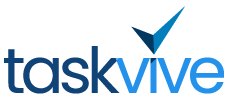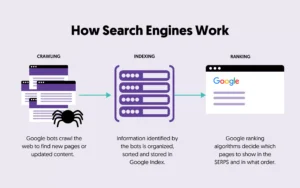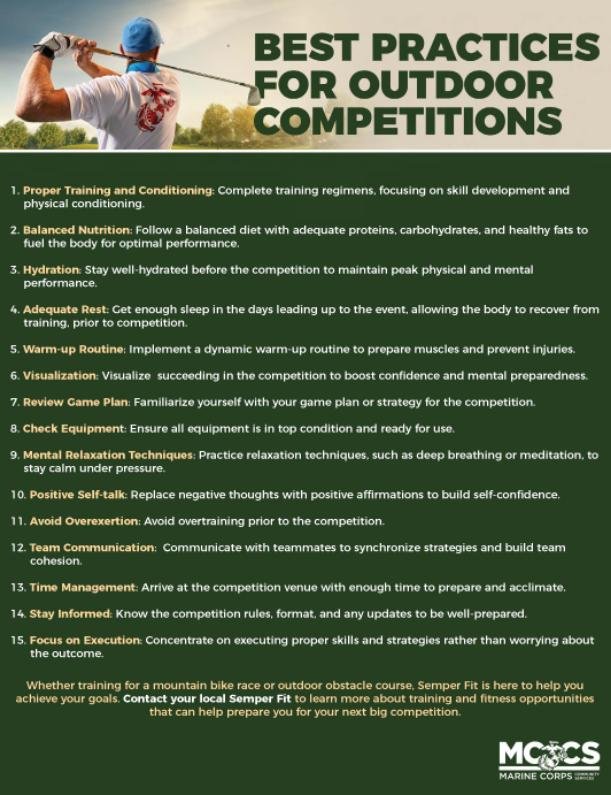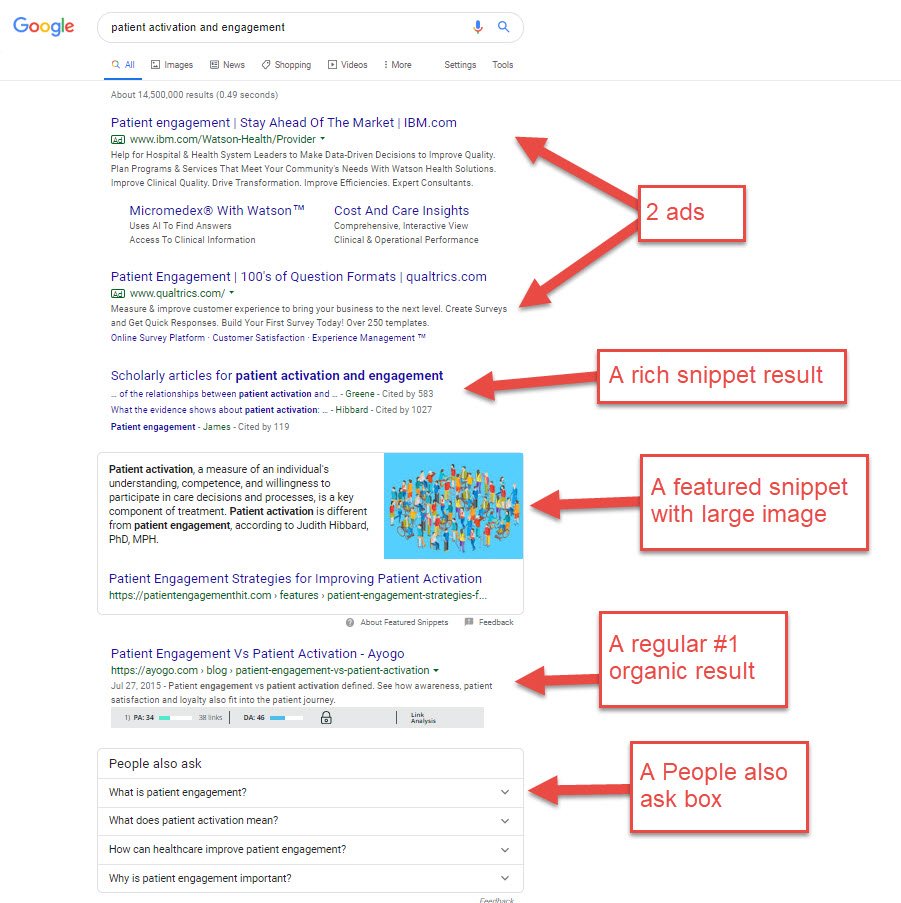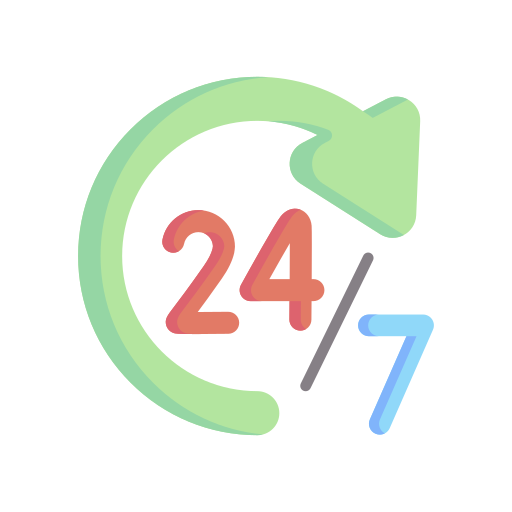Selecting and using productivity tools can significantly enhance your work efficiency. But how do you make the right choice?
Productivity tools come in many forms. They can help with time management, task tracking, and collaboration. With so many options available, finding the right tools can be overwhelming. It’s crucial to know your specific needs and goals. This will guide you in choosing tools that are truly beneficial.
Curious about how do you select and use productivity tools? Learn, step by step, how to choose the best tool for your needs to maximize your efficiency and stay organized. Perfect for both a beginner and professional looking to boost productivity and get more done each day! You much learn about How you boost your productivity with AI tools
Introduction To Productivity Tools
In today’s fast-paced world, staying productive is crucial. Productivity tools help us manage our time, organize tasks, and improve efficiency. These tools can make a significant difference in achieving our goals. This section will introduce you to productivity tools and explain their importance.
Importance Of Productivity Tools
Productivity tools are essential for managing daily tasks. They help you stay organized and focused. Without them, it’s easy to feel overwhelmed by responsibilities. These tools streamline workflows, allowing you to complete tasks faster and with less effort.
Here are some key benefits of using productivity tools:
- Enhanced organization: Keep track of tasks and deadlines.
- Improved time management: Allocate time effectively to different tasks.
- Increased efficiency: Automate repetitive tasks and minimize errors.
- Better collaboration: Work seamlessly with team members.
Common Types Of Productivity Tools
There are various types of productivity tools available. Each serves a unique purpose and caters to different needs. Understanding these types can help you choose the right tool for your requirements.
Here are some common types of productivity tools:
- Task Management Tools: Tools like Trello and Asana help you organize and prioritize tasks.
- Time Tracking Tools: Tools like Toggl and Clockify monitor how you spend your time.
- Note-Taking Tools: Tools like Evernote and OneNote help you capture and organize ideas.
- Collaboration Tools: Tools like Slack and Microsoft Teams enhance team communication.
- Project Management Tools: Tools like Monday.com and Basecamp help manage complex projects.
Choosing the right productivity tool depends on your specific needs. Consider what tasks you need to manage and how you prefer to work. This will help you select a tool that enhances your productivity.

Credit: www.penguinsolutions.com
Identifying Your Needs
Identifying your needs is the first step in selecting the right productivity tools. Your productivity can suffer if you choose tools that don’t align with your workflow. This section covers how to assess your workflow and set clear goals to identify your needs.
Assessing Your Workflow
To find the right productivity tools, start by assessing your workflow. Look at your daily tasks and identify repetitive activities. Note down the tasks that take the most time. Evaluate if these tasks could be automated or streamlined. Use the following table to organize your findings:
| Task | Time Spent | Possible Automation |
|---|---|---|
| Email Management | 2 hours/day | Yes |
| Project Tracking | 1 hour/day | No |
Understanding your workflow helps you see where improvements are needed. This makes it easier to choose tools that can help you.
Setting Clear Goals
Setting clear goals is essential for identifying your productivity needs. Define what you want to achieve with the help of these tools. Your goals should be specific, measurable, and time-bound. Use the SMART criteria to set effective goals:
- Specific: Clearly define what you want to accomplish.
- Measurable: Ensure you can track your progress.
- Achievable: Make sure the goal is realistic.
- Relevant: Align the goal with your broader objectives.
- Time-bound: Set a deadline for achieving the goal.
Example of a SMART goal: “Reduce email response time by 50% within 3 months.”
Setting clear goals helps you choose tools that align with your objectives. It ensures you get the most value from the tools you select.
Researching Tools
Finding the right productivity tools can be a game-changer. Researching tools is the first step. It helps you make informed choices. But how do you start your research? Here are some simple strategies to help you.
Reading Reviews
Reviews offer firsthand experiences from other users. They can highlight the pros and cons of each tool. Check multiple review sites for a balanced perspective. Look for patterns in the feedback. Are there common praises or complaints? This can guide your decision.
Also, consider the date of the reviews. Tools get updates, and old reviews might not reflect the current version. Look for the most recent feedback. It gives a more accurate picture of the tool’s performance.
Seeking Recommendations
Ask friends and colleagues for their suggestions. They might have tried and tested various tools. Their insights can save you time and effort. Join online forums and communities. Participate in discussions and ask for opinions. Real-life experiences can provide valuable information.
Social media platforms are also helpful. Follow productivity experts and influencers. They often share their favorite tools and tips. This can lead you to discover reliable tools that you might have missed.
Evaluating Features
Choosing the right productivity tools requires a careful evaluation of their features. The right tools can make or break your workflow. Not all features are created equal. Some are essential, while others are nice bonuses.
Must-have Features
Start by identifying essential features for your tasks. These are non-negotiable. Collaboration capabilities are vital if you work in a team. You need seamless sharing, editing, and real-time updates. Task management is another must-have. It helps you track progress and meet deadlines. Prioritize tools with robust scheduling and notification systems. Integration with other software is crucial too. Ensure the tool works with your existing apps. This saves time and prevents data silos.
Nice-to-have Features
Once you have the essentials, look at additional features. These are not critical but can enhance productivity. Customization options allow you to tailor the tool to your needs. This can make your workflow more efficient. Look for tools with templates and personalization features. Automation is another nice-to-have feature. It can handle repetitive tasks and save time. Reporting and analytics can provide insights into your productivity. This helps you identify areas for improvement.
Testing And Trial Periods
Selecting the right productivity tools can be a game-changer. Testing and trial periods play a crucial role. They help you make informed decisions. You get to explore features and assess functionality. This section will guide you on how to make the best use of these periods.
Utilizing Free Trials
Many productivity tools offer free trials. These trials usually last for a limited time. Use them to test core features. Check if the tool meets your needs. Make sure to explore all functionalities. Note any limitations you encounter. This will help you decide if the tool is worth investing in.
Gathering User Feedback
Gather feedback from other users. Look for reviews online. Join forums and discussion groups. Ask questions about the tool. Learn from others’ experiences. This can provide insights you might miss. User feedback can highlight potential issues. It can also show you the benefits of the tool.
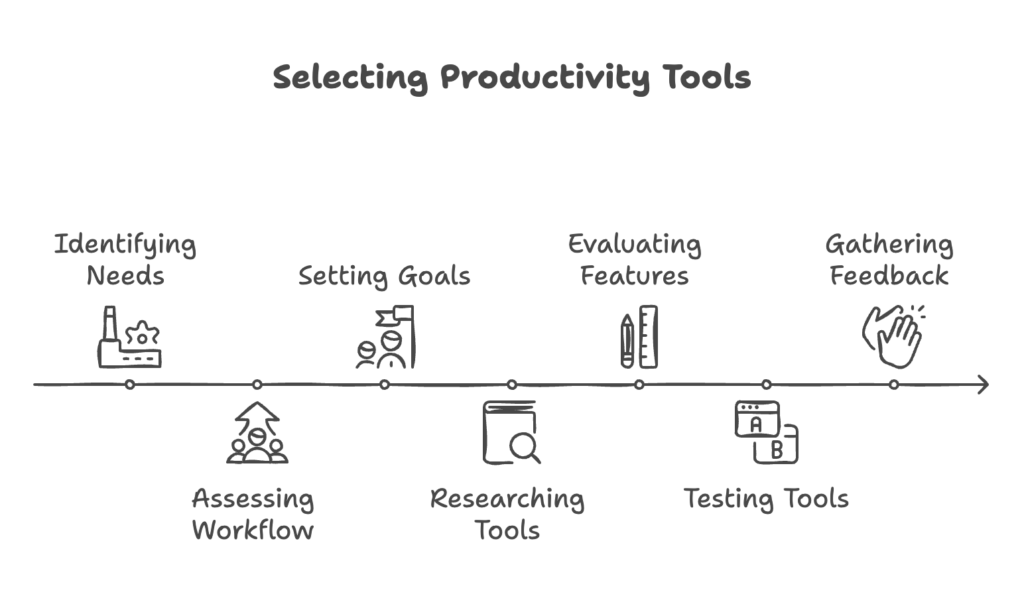
Integration With Existing Systems
Selecting the right productivity tools is only half the battle. Ensuring these tools fit seamlessly with your current systems is crucial. This integration process can save time, reduce errors, and boost overall efficiency. Let’s dive into two key aspects to consider: compatibility checks and data migration.
Compatibility Checks
Compatibility checks are the first step. Ensure the new tool can communicate with your existing software. This prevents issues down the line. Check for supported file formats. Verify APIs for smooth data exchange. Compatibility ensures your systems work together without a hitch.
Data Migration
Data migration is the next big step. Moving data from old systems to new tools must be smooth. Ensure the tool supports bulk data import. Look for tools that preserve data integrity. Data should remain accurate and accessible. Successful data migration is key to seamless integration.
Training And Onboarding
Choosing the right productivity tools is just the start. Training and onboarding are crucial for ensuring your team can use these tools effectively. This section will guide you through providing necessary training resources and ensuring team adoption.
Providing Training Resources
To begin, create a structured plan for training. This plan should include various training materials such as:
- Step-by-step guides
- Video tutorials
- Frequently Asked Questions (FAQs)
Host live training sessions where employees can ask questions. Record these sessions for future reference. Create a knowledge base with all training documents and videos in one place. This ensures easy access for all team members.
Ensuring Team Adoption
For successful team adoption, involve your team early in the selection process. Collect their feedback on the tools. This makes them feel valued and increases their willingness to adopt the tools.
Use a phased approach for implementation:
- Introduce the tool to a small group first.
- Gather feedback and make necessary adjustments.
- Roll out the tool to the entire team.
Encourage the team by recognizing and rewarding those who use the tools effectively. Regularly check in with your team to address any issues and provide ongoing support. This will ensure the tools are used to their full potential.
In summary, providing adequate training resources and ensuring team adoption are key steps in effectively using productivity tools. With the right approach, your team can become more productive and efficient.
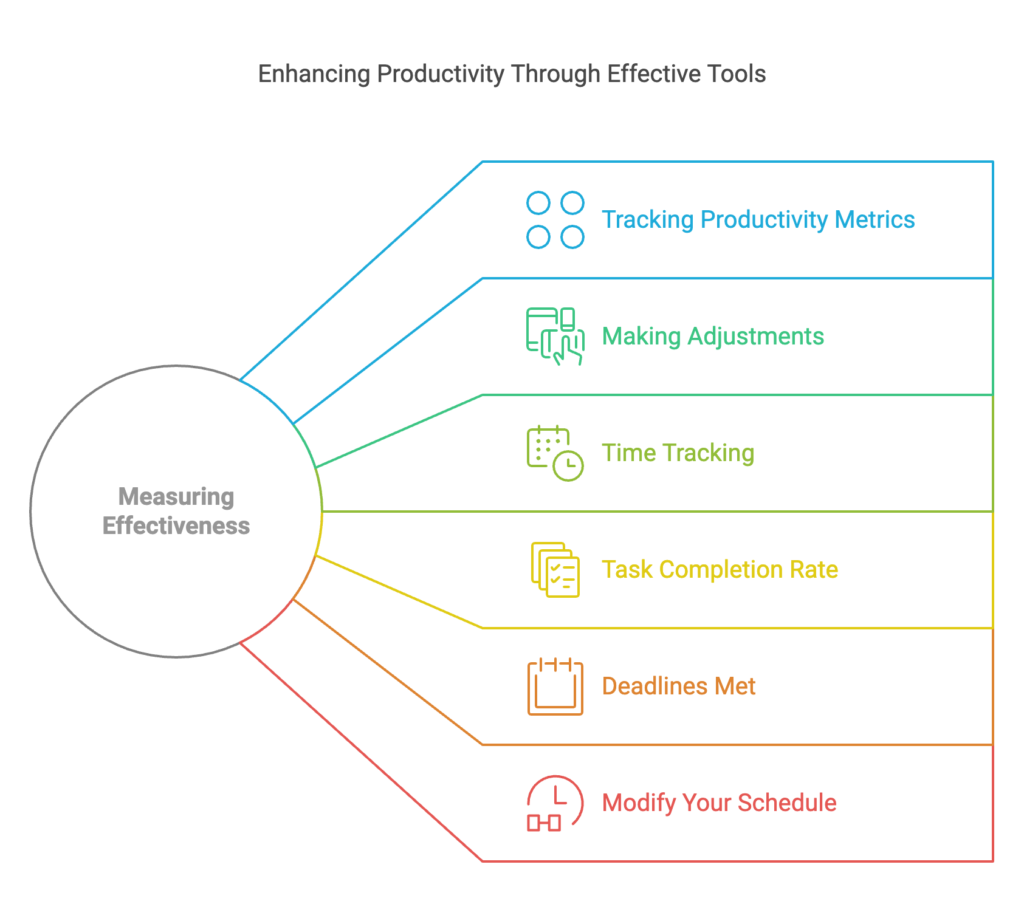
Measuring Effectiveness
Using productivity tools can help you manage your time and tasks better. But how do you know if they are actually working? Measuring effectiveness is key to ensuring that your tools are delivering the desired results. This involves tracking productivity metrics and making adjustments based on your findings.
Tracking Productivity Metrics
Start by identifying the metrics that are important to you. Common metrics include time spent on tasks, the number of tasks completed, and project deadlines met. Consider using the following methods:
- Time Tracking: Use tools like Toggl or Clockify to log the time spent on different tasks.
- Task Completion Rate: Track how many tasks you complete in a given period using Trello or Asana.
- Deadlines Met: Monitor if you are meeting your project deadlines consistently.
Record these metrics regularly. You can use a simple spreadsheet to keep a log of your data, or you can rely on the built-in reporting features of your productivity tools.
Making Adjustments
Once you have gathered enough data, analyze it to identify patterns. Are there specific times of the day when you are most productive? Do you complete more tasks when you focus on one project at a time? Use these insights to make necessary adjustments.
Consider the following adjustments:
- Modify Your Schedule: Focus on high-energy periods for complex tasks.
- Optimize Task Lists: Break down large tasks into smaller, manageable parts.
- Remove Distractions: Identify and minimize interruptions during work hours.
By making these adjustments, you can improve your productivity over time. Remember, the goal is to find a system that works best for you and your unique needs.
Expert Tips For Maximizing Productivity
Boosting productivity involves more than just downloading the latest app. It requires smart strategies and the right tools. Here are expert tips to help you get the most out of your productivity tools.
Prioritizing Tasks
Organizing your tasks can make a big difference. Use a task management tool to list and prioritize your tasks. Tools like Todoist or Trello can help you see what needs to be done first.
- Break down large tasks into smaller steps.
- Set deadlines for each task.
- Mark tasks as high, medium, or low priority.
By focusing on the most important tasks first, you can make sure you’re always working on what matters most.
Automating Repetitive Work
Automation can save you a lot of time. Use tools like Zapier or IFTTT to automate repetitive tasks. These tools can connect different apps and automate workflows without any coding.
| Task | Automation Tool |
|---|---|
| Email sorting | Zapier |
| Social media posting | IFTTT |
Set up simple rules to handle routine tasks. For example, you can automatically move emails to folders based on keywords. Or, you can schedule social media posts in advance.
By automating these tasks, you can focus your energy on more important work.
Frequently Asked Questions
What Are Productivity Tools?
Productivity tools are software or applications designed to help users manage tasks, time, and projects efficiently.
How Do You Choose A Productivity Tool?
To choose a productivity tool, identify your needs, research options, and test their features.
Why Are Productivity Tools Important?
Productivity tools are important because they streamline tasks, improve efficiency, and help manage time effectively.
Can Productivity Tools Improve Teamwork?
Yes, productivity tools can improve teamwork by enhancing communication, collaboration, and project management.
Conclusion
Selecting the right productivity tools boosts efficiency. Start by assessing your needs. Research options that fit your workflow. Test a few tools before committing. Integrate them into your routine gradually. Monitor their impact on your productivity. Adjust usage as needed.
Remember, the best tools simplify tasks. They should save time, not add complexity. Stay updated on new tools and features. Keep refining your toolset for optimal productivity. Effective use of these tools can greatly enhance your daily tasks.

Sofia Grant is a business efficiency expert with over a decade of experience in digital strategy and affiliate marketing. She helps entrepreneurs scale through automation, smart tools, and data-driven growth tactics. At TaskVive, Sofia focuses on turning complex systems into simple, actionable insights that drive real results.
